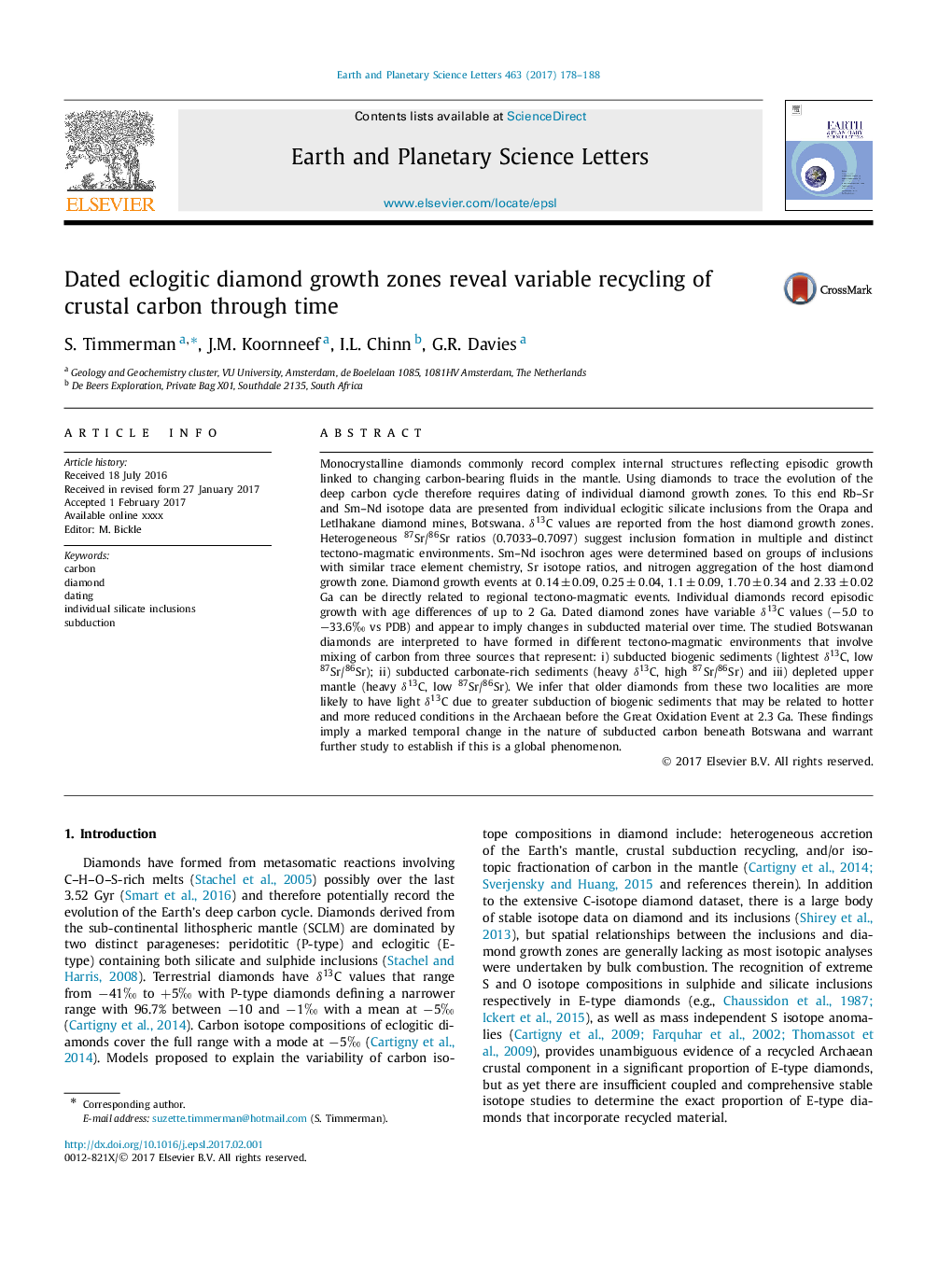| کد مقاله | کد نشریه | سال انتشار | مقاله انگلیسی | نسخه تمام متن |
|---|---|---|---|---|
| 5780102 | 1634693 | 2017 | 11 صفحه PDF | دانلود رایگان |
عنوان انگلیسی مقاله ISI
Dated eclogitic diamond growth zones reveal variable recycling of crustal carbon through time
ترجمه فارسی عنوان
مناطق زراعی الجزایر اکگلتیتی تاریخی، نشانگر بازدهی متغیر کربن پوسته از طریق زمان است
دانلود مقاله + سفارش ترجمه
دانلود مقاله ISI انگلیسی
رایگان برای ایرانیان
موضوعات مرتبط
مهندسی و علوم پایه
علوم زمین و سیارات
علوم زمین و سیاره ای (عمومی)
چکیده انگلیسی
Monocrystalline diamonds commonly record complex internal structures reflecting episodic growth linked to changing carbon-bearing fluids in the mantle. Using diamonds to trace the evolution of the deep carbon cycle therefore requires dating of individual diamond growth zones. To this end Rb-Sr and Sm-Nd isotope data are presented from individual eclogitic silicate inclusions from the Orapa and Letlhakane diamond mines, Botswana. δ13C values are reported from the host diamond growth zones. Heterogeneous 87Sr/86Sr ratios (0.7033-0.7097) suggest inclusion formation in multiple and distinct tectono-magmatic environments. Sm-Nd isochron ages were determined based on groups of inclusions with similar trace element chemistry, Sr isotope ratios, and nitrogen aggregation of the host diamond growth zone. Diamond growth events at 0.14±0.09, 0.25±0.04, 1.1±0.09, 1.70±0.34 and 2.33±0.02 Ga can be directly related to regional tectono-magmatic events. Individual diamonds record episodic growth with age differences of up to 2 Ga. Dated diamond zones have variable δ13C values (â5.0 to â33.6â° vs PDB) and appear to imply changes in subducted material over time. The studied Botswanan diamonds are interpreted to have formed in different tectono-magmatic environments that involve mixing of carbon from three sources that represent: i) subducted biogenic sediments (lightest δ13C, low 87Sr/86Sr); ii) subducted carbonate-rich sediments (heavy δ13C, high 87Sr/86Sr) and iii) depleted upper mantle (heavy δ13C, low 87Sr/86Sr). We infer that older diamonds from these two localities are more likely to have light δ13C due to greater subduction of biogenic sediments that may be related to hotter and more reduced conditions in the Archaean before the Great Oxidation Event at 2.3 Ga. These findings imply a marked temporal change in the nature of subducted carbon beneath Botswana and warrant further study to establish if this is a global phenomenon.
ناشر
Database: Elsevier - ScienceDirect (ساینس دایرکت)
Journal: Earth and Planetary Science Letters - Volume 463, 1 April 2017, Pages 178-188
Journal: Earth and Planetary Science Letters - Volume 463, 1 April 2017, Pages 178-188
نویسندگان
S. Timmerman, J.M. Koornneef, I.L. Chinn, G.R. Davies,
